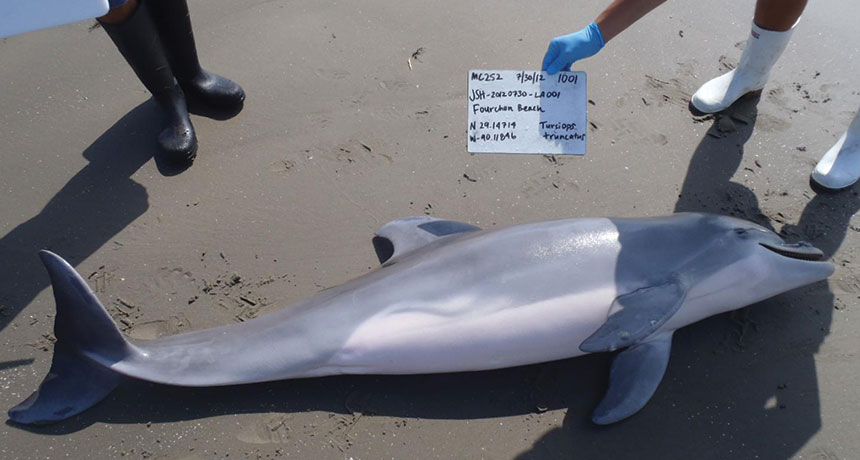Rising dolphin deaths linked to Deepwater Horizon spill
Gulf animals suffer from lung lesions, other ill effects related to oil exposure

DOLPHIN DEATH Scientists have linked toxic effects of oil spilled in the 2010 Deepwater Horizon disaster to an ongoing surge in stranded and dead dolphins, such as this one, along the Gulf of Mexico coast.
Louisiana Department of Wildlife and Fisheries







